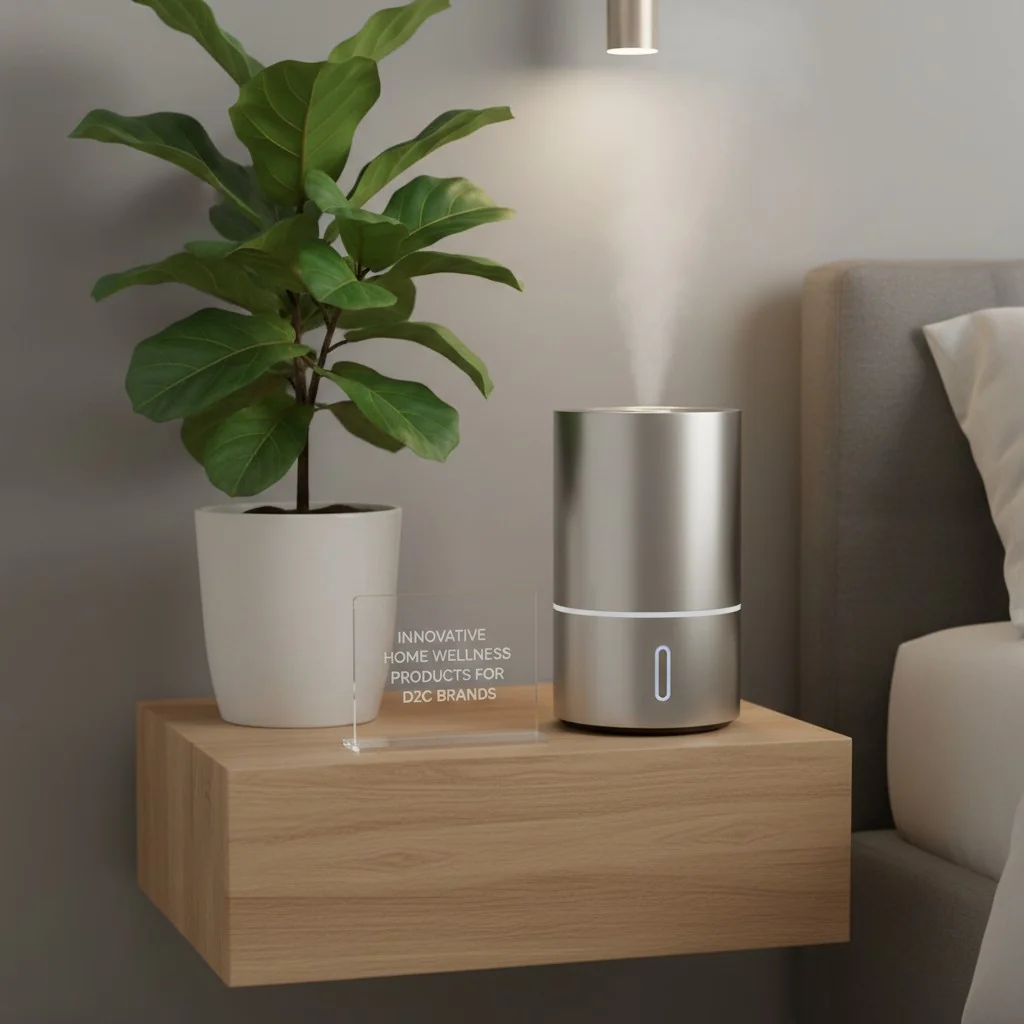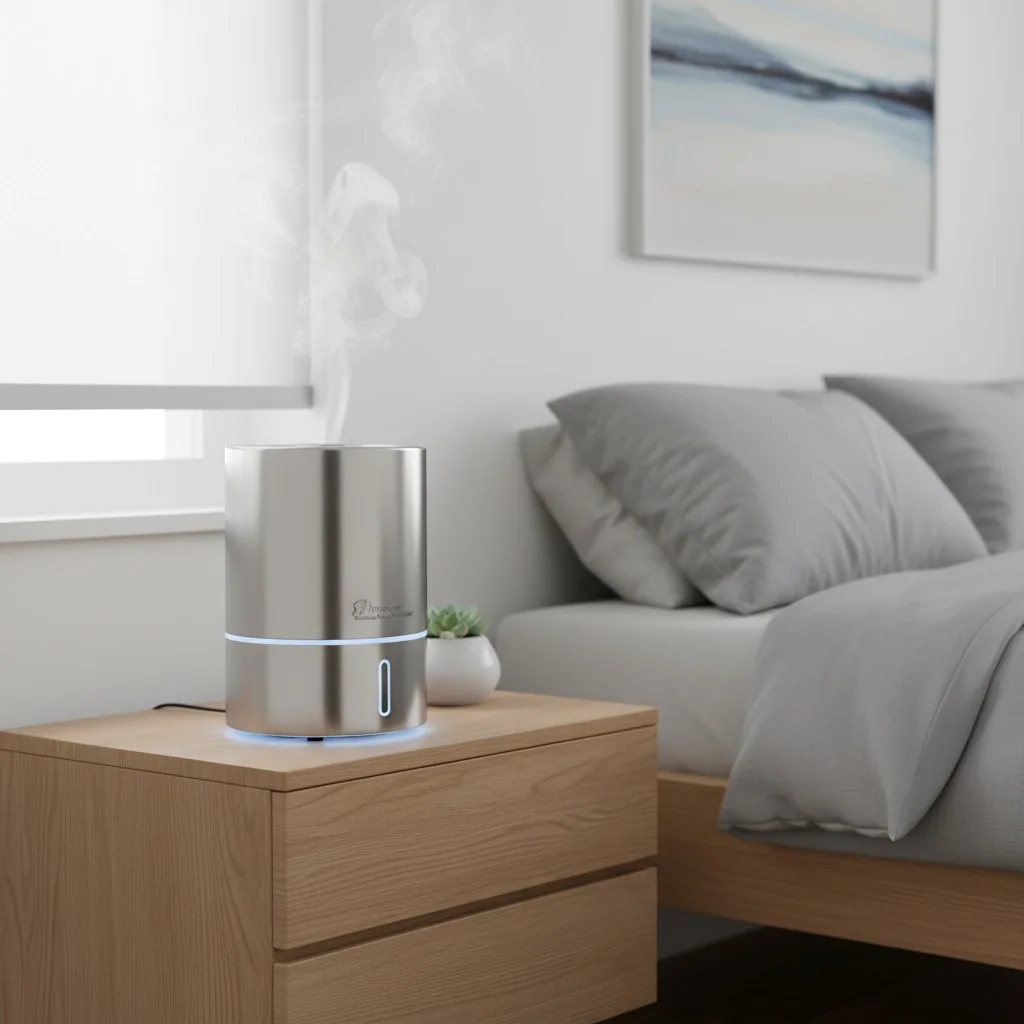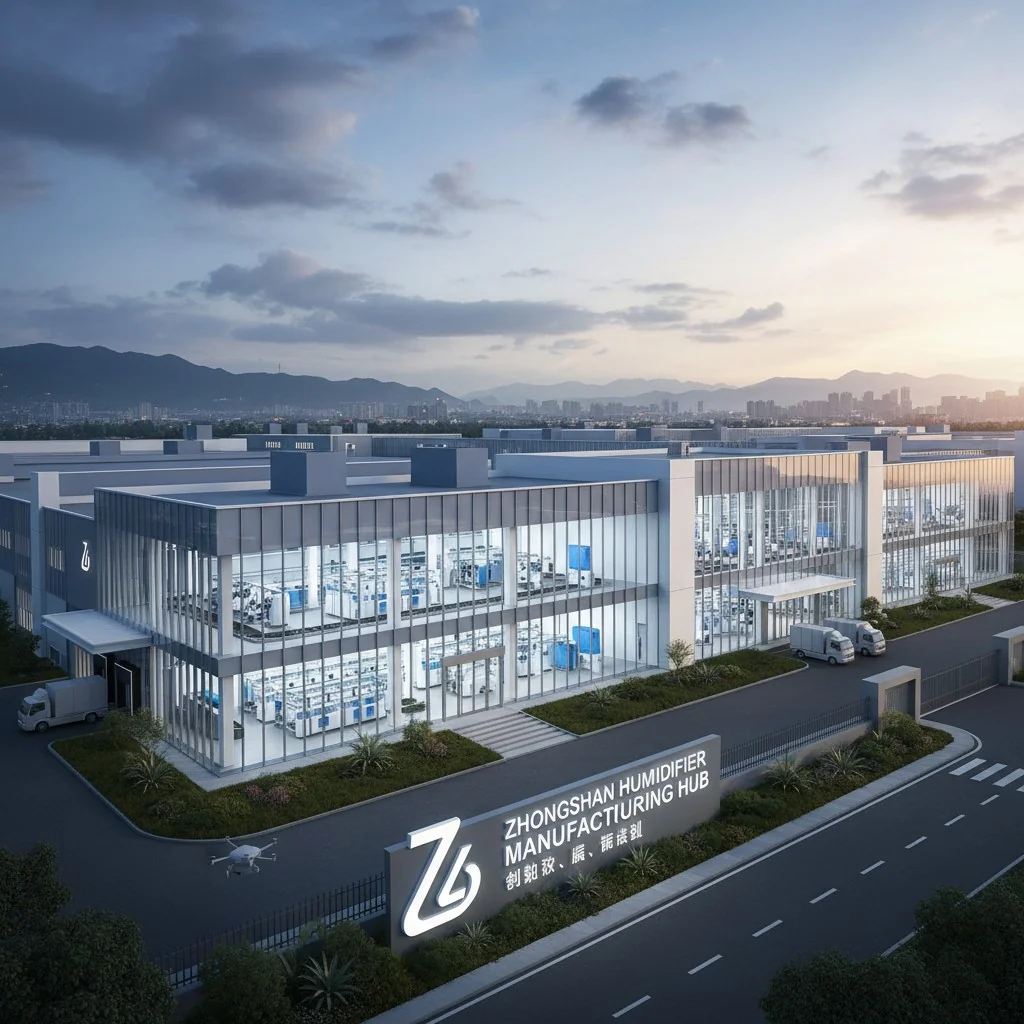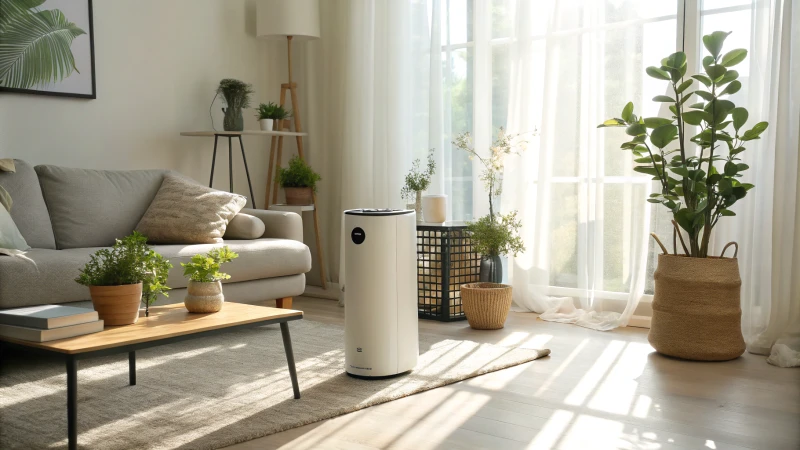
¿Le ha parecido alguna vez su casa un bastión contra las alergias al moho?
Purificadores de aire con True HEPA o HEPA 14 filtros funcionan bien contra las alergias al moho. Estos filtros atrapan eficazmente las diminutas esporas de moho. Mejoran la calidad del aire y ayudan a reducir los síntomas de la alergia. El aire se vuelve más limpio con estos filtros. El aire limpio aporta confort.
Verdadero HEPA y HEPA 14 filtros actúan como los superhéroes de la limpieza del aire. Sin embargo, hay más cosas en las que pensar. Al principio, demasiados purificadores de aire me confundían. Poco a poco, aprendí que conocer la tecnología que hay dentro de estos filtros lo cambiaba todo. Estos filtros atrapan partículas diminutas. Las mejores marcas ofrecen diferentes características. Otras características mejoran el funcionamiento de los purificadores de aire.
Los filtros HEPA 14 son eficaces contra las alergias al moho.Verdadero
Los filtros HEPA 14 capturan el 99,995% de las partículas suspendidas en el aire, incluido el moho.
La ionización biopolar es más eficaz que la HEPA para el moho.Falso
Los filtros HEPA han demostrado ser más eficaces en las pruebas de laboratorio para la eliminación del moho.
¿Cómo HEPA ¿Funcionan los filtros contra las alergias al moho?
¿Alguna vez ha tenido la sensación de estar librando una lucha invisible contra la alergia al moho? Verdadero HEPA los filtros pueden ser tu aliado oculto.
Verdadero HEPA ayudan con las alergias al moho. Atrapan el 99,97% de las esporas de moho en el aire, incluso las más pequeñas, de 0,3 micras. Esto reduce enormemente la exposición. Los síntomas de la alergia en su hogar se calmarán gracias a ello.
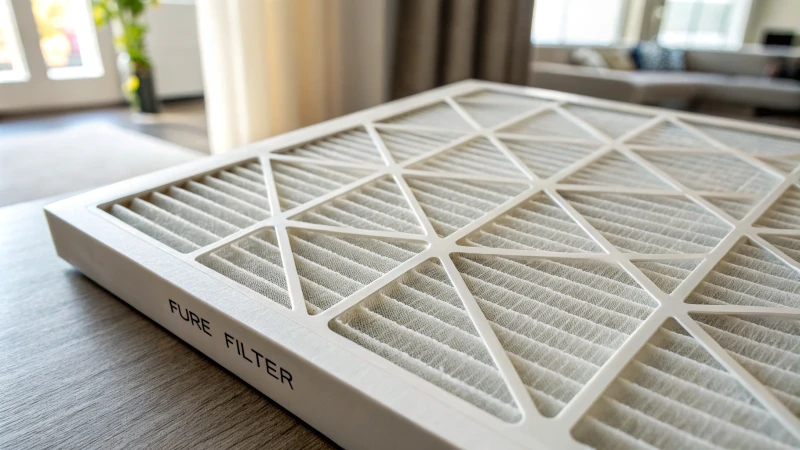
Comprender HEPA Tecnología
Recuerdo la primera vez que supe de HEPA filtros; fue como encontrar un superpoder oculto para mi hogar. Verdadero HEPA (High-Efficiency Particulate Air) capturan muchas partículas suspendidas en el aire, incluido el polen y el polvo. También son excelentes atrapando esporas de moho. Al capturar el 99,97% de partículas tan pequeñas como 0,3 micras, estos filtros reducen significativamente nuestra exposición diaria a los alérgenos.
Filtración de esporas de moho
Las esporas de moho miden entre 1 y 20 micras. Verdadero HEPA filtros1 capturarlos fácilmente. Esto es realmente importante para las personas sensibles al moho; menos exposición significa menos estornudos y menos congestión. La respiración se vuelve más cómoda, proporcionando alivio con cada respiración.
La importancia de los purificadores de aire
Cuando compré por primera vez un purificador de aire con un verdadero HEPA filtro, cambió nuestra casa por completo. Las zonas propensas al moho probablemente necesiten un buen purificador de aire. Los modelos con capas antimicrobianas son muy útiles, ya que actúan como un protector contra el crecimiento de moho.
| Característica | Descripción |
|---|---|
| Verdadero HEPA Filtro | Atrapa el 99,97% de partículas de hasta 0,3 micras |
| Capa antimicrobiana | Evita el crecimiento de esporas de moho en la superficie del filtro |
Otras tecnologías
En mi búsqueda de un aire más limpio, otras tecnologías como Tecnología PECO2 afirman tratar las alergias al moho. Sin embargo, HEPA sigue siendo el más fiable para capturar esporas rebeldes. Otros métodos pueden sonar bien, pero suelen requerir más cuidados o no funcionan con la misma eficacia a largo plazo.
Cómo mantener su HEPA Filtro
El mantenimiento regular es muy importante. Sustituya el filtro según las indicaciones del fabricante; algunos modelos incluso le indican cuándo debe cambiarlo. La protección continua contra la alergia al moho depende de esto, así que recuérdelo siempre.
Comprender estos puntos ayuda a elegir el purificador de aire adecuado y a mantenerlo correctamente para mantener alejadas las alergias al moho.
Para una comparación más detallada de las tecnologías de purificación del aire, consulte esta guía completa3 para seleccionar la solución que mejor se adapte a sus necesidades.
Los verdaderos filtros HEPA son los mejores para las alergias al moho.Verdadero
Los filtros HEPA capturan eficazmente las esporas de moho, reduciendo los alérgenos.
La ionización biopolar es más eficaz que la HEPA para el moho.Falso
Los filtros HEPA han demostrado ser superiores en las pruebas de laboratorio para la eliminación del moho.
¿Por qué HEPA ¿14 tecnología superior para la eliminación del moho?
La primera vez que apareció moho en mi casa, fue bastante inquietante. Entonces, me enteré de la fuerza de HEPA 14 filtros.
HEPA 14 filtros son excelentes para eliminar el moho. Atrapan el 99,995% de partículas diminutas de hasta 0,3 micras. El resultado es un ambiente interior mucho más limpio que el que proporcionan los filtros de calidad inferior.

Comprender HEPA 14 Tecnología
Recuerdo que aprendí lo importante HEPA 14 filtros son. Estuve mirando purificadores de aire porque encontré moho en mi sótano, y los datos me sorprendieron. Aire particulado de alta eficiencia (HEPA) son famosos por atrapar partículas diminutas. HEPA 14 son mejores; atrapan el 99,995% de partículas de hasta 0,3 micras.
| Tipo de filtro | Eficacia | Tamaño de las partículas (micras) |
|---|---|---|
| HEPA 13 | 99.95% | 0.3 |
| HEPA 14 | 99.995% | 0.3 |
Sólo este hecho me convenció de que elegir HEPA 14 fue la elección más inteligente para luchar contra el moho.
El moho y sus efectos sobre la salud
Las esporas del moho se esconden en los rincones de nuestras casas y pueden perjudicar la salud. He descubierto que provocan alergias y problemas respiratorios. En Asociación Americana del Pulmón4 advierte sobre el asma y las alergias derivadas de una exposición prolongada, subrayando la necesidad de filtros de alta eficiencia como HEPA 14.
Comparación de HEPA 14 con otras tecnologías
Explorar diversas tecnologías puede asustarte un poco. Opciones como ionización bipolar y Tecnología PECO parecen prometedores, pero basándome en mi investigación, HEPA sigue siendo el mejor.
- Ionización bipolar: Los iones se adhieren a las partículas pero carecen de HEPAfiabilidad.
- Tecnología PECO: Utiliza la luz para eliminar partículas, pero no siempre vence HEPA para el moho.
Para más detalles, consulte estas reseñas5.
Aplicaciones y ventajas en el mundo real
Imagínese entrar en una habitación y respirar aire fresco, sin olores a moho ni preocupaciones por inhalar sustancias nocivas. Esto me ocurría cuando utilizaba un HEPA 14 filtro en casa. Estos filtros son valiosos en lugares húmedos como sótanos y cuartos de baño.
Si esta tecnología le interesa para el hogar o el trabajo, examine opciones de productos6 que utilizan HEPA 14 filtros para un gran control del moho. Realmente cambió mi vida; mi casa se siente mejor, más fresca y más agradable.
Los filtros HEPA 14 son superiores para la eliminación del moho.Verdadero
Los filtros HEPA 14 capturan las partículas más pequeñas con mayor eficacia que los de grados inferiores.
Las alergias al moho pueden provocar cáncer con el tiempo.Falso
Las alergias al moho pueden causar problemas respiratorios, pero no cáncer directamente.
¿Qué características debe buscar en un purificador de aire para el moho?
Cuando empezó a aparecer moho en mi casa, me di cuenta de que había llegado el momento de adquirir el mejor purificador de aire. Elegir el purificador adecuado realmente cambia tu espacio vital.
Utilice un purificador de aire con un True HEPA filtro para combatir bien el moho. Este tipo de filtro puede atrapar diminutas esporas en el aire. La tecnología de luz UV-C mata los gérmenes y el moho. Un filtro de carbono elimina los malos olores y un filtro antimicrobiano puede impedir que crezca el moho. Todas estas herramientas juntas ayudan a que el aire sea más fresco. El aire limpio es muy importante. El aire fresco es muy importante.
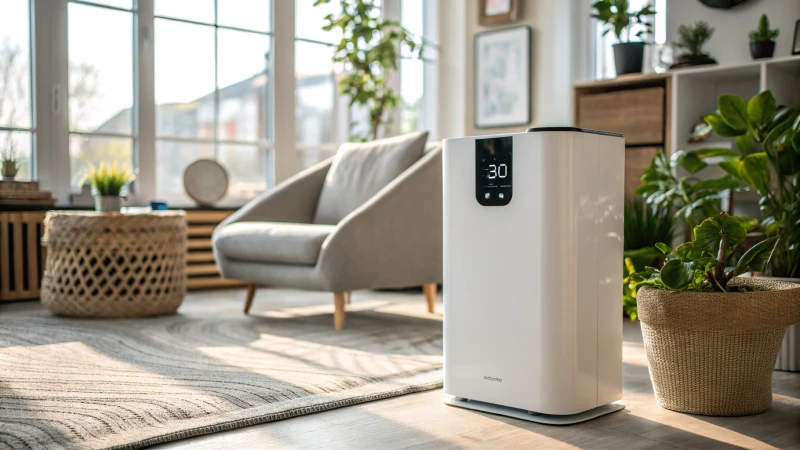
Verdadero HEPA Filtros: La mejor elección
Aprender sobre True HEPA me han proporcionado un gran alivio. Estos filtros superiores atrapan el 99,97% de las partículas diminutas y pequeñas, incluidas las resistentes esporas de moho. Imagínatelos como los guardias de un club, que sólo dejan pasar aire limpio. Elegir HEPA 14 modelos es como obtener un pase de acceso especial, que se ocupa de partículas aún más pequeñas. Más información HEPA filtros7.
Filtros de carbón activado: Eliminación de malos olores
Entrar en una habitación que olía a fresco y no a rancio me convenció para utilizar filtros de carbón activo. Estos filtros actúan como ambientadores, aspirando los olores a moho y las sustancias químicas nocivas. ¿El resultado? Un hogar que huele a limpio y fresco.
| Característica | Beneficios |
|---|---|
| Verdadero HEPA Filtro | Captura el 99,97% de partículas |
| Filtro de carbón activado | Absorbe olores y COV |
| Filtro antimicrobiano | Elimina bacterias y esporas de moho |
Tecnología de luz UV-C: Destrucción de esporas
Pensar en la tecnología de luz UV-C me hizo pensar en pequeñas espadas cortando esporas de moho. Aunque menos dramáticas, las luces UV-C realmente destruyen el ADN de los microorganismos, deteniendo su crecimiento. Recuerde que su efecto cambia con la duración y la intensidad de la luz. Más información sobre la tecnología UV-C8.
Filtros antimicrobianos: Seguridad extra
Para mí, la comodidad de utilizar filtros antimicrobianos no tiene precio. Los productos químicos especiales que contienen detienen el moho y las bacterias en el filtro, haciendo que éste funcione más y mejor.
Funciones de control de la humedad: Mantiene alejado el moho
He descubierto que al moho le gustan las condiciones húmedas. Es importante controlar la humedad interior. Algunos purificadores de aire también reducen la humedad o tienen sensores para mantenerla equilibrada. Es como tener una máquina del tiempo en casa, probablemente deteniendo el moho para siempre.
Comparación de tecnologías: Un vistazo rápido
Puede que otras tecnologías suenen bien, pero según mi experiencia y mis investigaciones, nada supera a un robusto HEPA filtro en el que confían laboratorios y usuarios satisfechos.
Conocer estas características ayuda a elegir un purificador de aire que trate bien el moho, mejorando la salud del aire interior. Se trata realmente de convertir su hogar en un espacio seguro y acogedor.
Los filtros HEPA 14 son los más eficaces contra las alergias al moho.Verdadero
Los filtros HEPA 14 capturan el 99,995% de las partículas, incluidas las esporas de moho.
La ionización biopolar es más eficaz que la HEPA para la eliminación del moho.Falso
Las pruebas de laboratorio demuestran que los filtros HEPA son más eficaces para eliminar el moho.
¿Qué marcas ofrecen los purificadores de aire más fiables para las alergias al moho?
¿Ha experimentado alguna vez la irritación persistente de las alergias al moho? Muchas personas comparten esta lucha. El purificador de aire adecuado resuelve este problema en su búsqueda de aire limpio.
Para combatir las alergias al moho, seleccione purificadores de aire que tengan True HEPA filtros, especialmente HEPA 14 o con filtro microbiano antimoho. HisoAir destaca por sus excelentes sistemas de filtración.
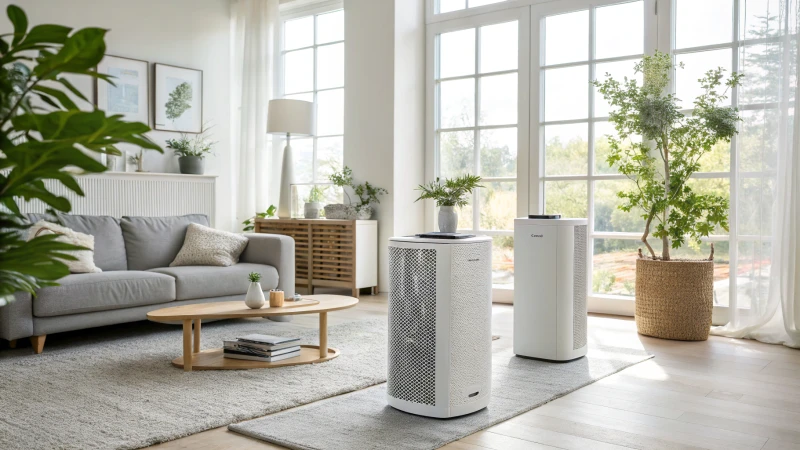
Alergias al moho y purificadores de aire
Luchar contra las alergias al moho significa muchos estornudos y picores de garganta. Encontrar alivio se convierte en algo esencial. A menudo me sentía frustrada, limpiaba constantemente y seguía teniendo irritación de garganta. Entonces conocí el poder de los purificadores de aire.
Cosas importantes en las que pensar:
- Tipo de filtro: Verdadero HEPA filtros son muy útiles. Considere modelos que ofrezcan HEPA 14 para una eficacia superior en la captura de esporas de moho.
- Características adicionales: Los filtros microbianos antimoho proporcionan una capa adicional de protección.
Las mejores marcas
| Marca | Característica principal |
|---|---|
| HisoAir | HEPA 14 y filtros antimicrobianos |
| Molekule | Tecnología PECO |
| Healthway | Tecnología DFS |
HisoAir: La mejor elección en el tratamiento de la alergia al moho
HisoAir realmente cambió la calidad del aire de mi casa. Su HEPA 14 filtros9 eliminan eficazmente los alérgenos del moho. Su avanzada tecnología es ideal para las alergias graves.
Molekule: Único con tecnología PECO
Molekule llamó mi atención con su Tecnología PECO10que funciona a un nivel muy detallado. Es interesante ver cómo se compara con normal HEPA filtros.
Tecnología DFS de Healthway
Los sistemas DFS de Healthway reciben grandes elogios en los hospitales. Me enteré de su gran capacidad de captura de patógenos y estudié sus productos.
Más tecnologías de purificación del aire
Además de HEPA y PECO, surgen nuevas tecnologías:
- Ionización biopolar: Conocido por neutralizar los alérgenos en el aire.
- Luz ultravioleta: Eficaz para matar las esporas de moho inmediatamente.
Comprender estos tecnologías11 probablemente sea muy útil para elegir lo que más le conviene.
Elegir la opción adecuada
Seleccionar un purificador de aire parece difícil, pero se trata de adaptar la tecnología a sus necesidades. Piense en el tamaño de la habitación y en las características específicas de la alergia. Las opiniones de los usuarios y los consejos de los expertos suelen ser útiles. Este guía12 puede ayudar a aclarar las cosas.
Entre tantas opciones, comprender qué características son importantes le guiará hacia un producto que mejore la calidad de su aire, como me ocurrió a mí. Tanto si elige HisoAir como otra marca, conocer sus necesidades le ayudará a respirar mejor.
Los filtros HEPA 14 eliminan eficazmente las esporas de moho.Verdadero
Los filtros HEPA 14 están diseñados para capturar el 99,995% de las partículas, incluido el moho.
Las alergias al moho pueden provocar cáncer con el tiempo.Falso
Las alergias al moho causan problemas respiratorios, pero no están relacionadas con el cáncer.
Conclusión
Verdadero HEPA y HEPA 14 purificadores de aire combaten eficazmente las alergias al moho capturando diminutas esporas, mejorando la calidad del aire y reduciendo los síntomas de alergia para conseguir un ambiente interior más saludable.
-
Conozca la eficacia de los filtros HEPA para capturar las esporas del moho y reducir los síntomas de la alergia. ↩
-
Explore cómo la tecnología PECO se compara con HEPA en la filtración de esporas de moho y alérgenos. ↩
-
Descubra una comparación detallada de las distintas tecnologías de purificación del aire para encontrar la más adecuada para controlar las alergias al moho. ↩
-
Infórmese sobre los posibles riesgos para la salud asociados a la exposición prolongada al moho a través de organizaciones sanitarias fiables. ↩
-
Descubra comparaciones detalladas entre distintas tecnologías de purificación del aire para tomar una decisión informada. ↩
-
Encuentre purificadores de aire de primera categoría equipados con tecnología HEPA 14 para una eliminación eficaz del moho. ↩
-
Sepa por qué los filtros HEPA son muy eficaces para eliminar las esporas de moho y otros alérgenos del aire. ↩
-
Descubra cómo funciona la tecnología de luz UV-C para destruir las esporas de moho y las bacterias a nivel molecular. ↩
-
Descubra por qué la filtración avanzada de HisoAir es altamente eficaz contra los alérgenos del moho. ↩
-
Descubra cómo la innovadora tecnología PECO de Molekule se compara con los filtros HEPA tradicionales. ↩
-
Comprender la eficacia de la luz ultravioleta para neutralizar las esporas de moho. ↩
-
Encuentre opiniones de expertos y usuarios para elegir el mejor purificador de aire para sus necesidades. ↩


